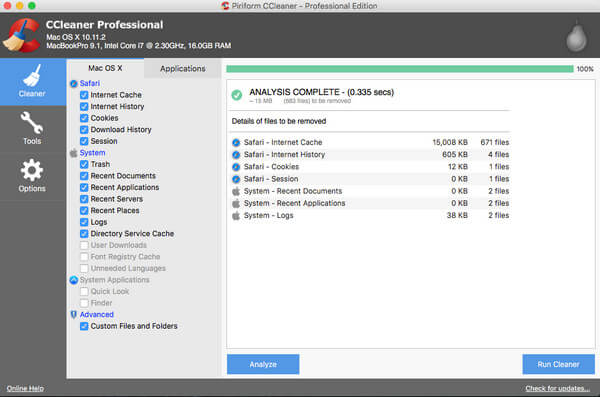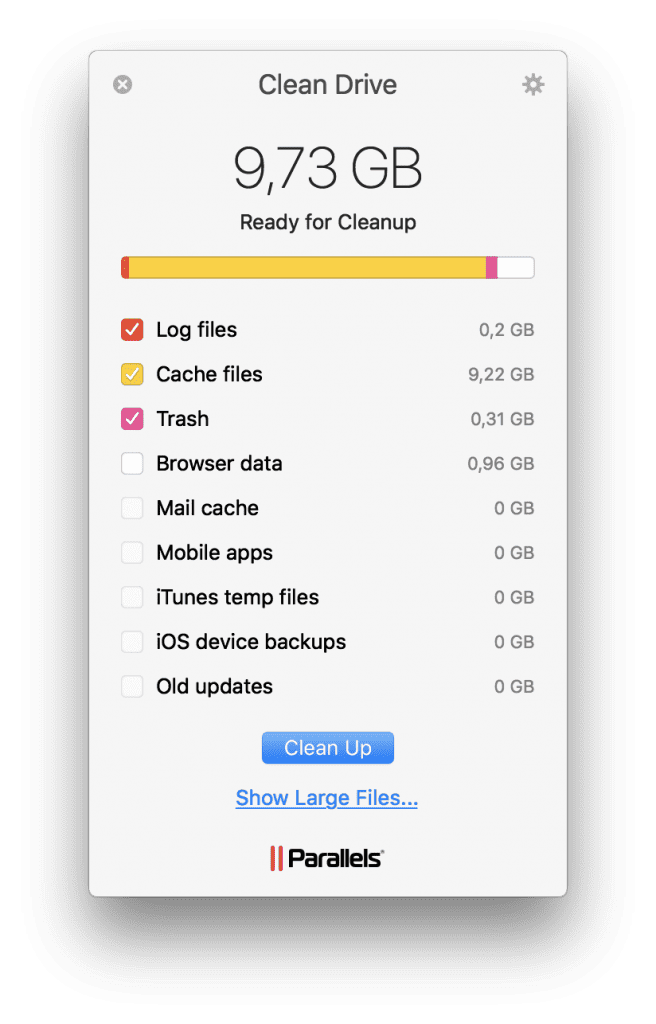- How To Clean Your Mac From Junk For Free Online
- How To Clean Your Mac From Junk For Free
- How To Clean Your Mac From Junk For Free Instantly
- How To Clean Your Mac From Junk For Free Printables
- There are three basic ways to clean all junk files from your MacBook. Automatically remove junk files With Mac cleanup app - Turn to Way 1. Clean up junk files manually - Turn to Way 2. Use built-in utility on Mac system - Turn to Way 3.
- One of the most reputable Mac cleaner which helps you manages your space.
- These junk files require an urgent cleaning as it may drag your Mac slowly. Though most of the junk files show up on the Mac with the use of internet, because of the trouble caused by these junk files to the system, it becomes very important to clean out these junk files from Mac.

Let us look at how you can use One Click Cleaning to clean junk files on Mac: When you open the App. Click on One Click Cleaning followed by Start System Scan. The app will scan your system and inform you about the junk on your Mac. Once the scan is completed, click on Clean Now. You can stop the scan by clicking on Stop Scan placed at bottom.
Taking control over storage space on your entire Mac is a challenge. The challenge isn’t so much in keeping it clean, but rather in understanding what exactly you’re dealing with and what can be the source of an issue when one occurs.
How to Clean Junk Files on Mac
How To Clean Your Mac From Junk For Free Online
First things first, junk files on your computer are not actual ‘junk’. Computing (macOS in particular) has evolved enough over to the years to avoid producing an absolute ‘waste’ and dumping it somewhere in your system without you being aware of it. What is often being referred to as junk is actually data that needs to be systematically erased from your system (automatically or manually) or is optional and takes up too little space to be worth removing by default. The exception are various types of malware and bloatware apps that do directly undermine the safety of your system and need to be repelled without hesitation.

Despite Mac maintenance scripts, there are roughly 12 types of files that occasionally require user’s attention — all kinds of caches, logs, binaries, backups, duplicates, localizations, etc. (you can find more info on every type in the infographic down below).
Each serve a purpose yet all are prone to getting corrupted, outdated or left behind. Accumulating such files does more than just take up space for nothing, yet ‘confuses’ your Mac potentially slowing down the way it operates. Therefore, preventative sweep-ups help Mac rebuild needed data and maximize its efficiency.
Why Delete Various Junk Files from Mac?
Despite cleanups being helpful you should not get overzealous. Depending on your use, the OS will accumulate different amounts of data that speeds up accessing certain apps or performing processes. Generally speaking, you should be running a cleaner only when you start noticing stutters. You can also can avoid cleaning out all of temporary data, and focus on what’s causing the issue instead.
Why Remove Corrupted Caches
When your browser cache gets corrupted, webpages load incorrectly and start taking substantially more time to load. Clear your browser cache to solve the problem and let it rebuild a new up-to-date one.
Why Erase Log Files
Log files are text data that is being stored on your Mac locally. It logs the events happening on your computer which can later be used to track and resolve issues. However, some issues can cause mac OS to generate enormous log files and take up tons of space. And while simply cleaning out logs without fixing the problem won’t accomplish anything, cleaning out logs after the issue has been resolved can free up additional space.
Whether it’s optimizing performance or making more room on your drive, systematic Mac cleaning benefits your system. Not feeling like running a full cleanup? Read up on the infographic below to learn more about the types of junk files on your Mac and ways to repel them.
Here’s a quick guide on how to clean junk files on Mac. We’ll go over types of junk you might have on your Mac and why it’s there, as well as ways of getting it removed. Why would you want it removed (apart from the desire to keep your Mac clean)? Because junk not only takes up space, it slows your Mac down, and it’s usually the reason behind system glitches and errors. In other words, getting rid of it is all around a great idea.
This guide will help you to clean all the extra junk on your Mac’s operating system and breathe new life into your Mac.

What are user cache files and how to remove them?
The user cache files are usually app files that are stored on your Mac. These are various temporary files that are meant to speed the performance of the Apple software. Caching data is essential for Macs that use wired internet connection. But, by caching for a long time, your Mac accumulates lots of files, which can affect its performance. So, it’s better to clean your Mac of them and help it run faster.
Here’s how to clean junk files on Mac and remove user cache:
How To Clean Your Mac From Junk For Free
- Open Finder.
- Press Command+Shift+G.
- Enter the following command into the field and select Go:
~/Library/Caches. - In the window that appears, you will see all your cache files.
- Press Command+A to select all files and delete them. Press Command and click on the folders you want to delete if you don’t want to remove all files at once.
- In the pop-up that appears, you’ll need to enter your user name and password.
If you still see folders in Caches, maybe you have some windows open. In other cases, there will be no cache files left.
What are system log files and how to remove them?
Every Mac has system log files stored deep inside its memory. Mac saves and stores system log files mainly for developers to diagnose errors and problems with macOS and system applications when they occur. These logs are plain text files, so they usually don’t take up a lot of storage. But, when you’re running out of free space, deleting even such small files may help you declutter your Mac.

It’s important to note, though, that cleaning system log files manually, you may accidentally delete some essential data. So, make sure to back up your data to avoid heartache when you delete something important. Using safe cleaning tools notarized by Apple, like CleanMyMac X, can help you prevent the risks of removing valuable data.
So, to clean system junk on your Mac, do the following:
- Open Finder.
- From the Go menu, select Go to folder.
- Enter the
/var/login the field and select Go. - You will see all the system log files. Select the files you want to remove and drag them to the Bin.
You can also find system log files in /Library/Logs. This folder contains system application logs that aren’t essential to store.
If you go to /Library/Logs/DiagnosticReports, you will find system reports. Safely delete the files to keep your Mac clean and free of clutter.
How to remove user log files?
When your app crashes, you usually are asked to submit a bug report. The system gathers your user logs and includes them in a report. The user log files don’t contain information on user activity as it may seem. They only deal with app-level functionality.
If your Mac is old, you probably have a lot of user logs. So, it’s time to clean your machine of them.
Follow the instructions to delete user log files on your Mac:
- Open Finder.
- Press Command+Shift+G.
- Enter the following command in the field and press Go:
~/Library/Logs. - You will see all the system log files. You can manually move the files from folders to Bin.
If you want to declutter your Mac fully, select all user log files and delete them.
How to delete language files?
Thanks to localization and language files, you can set your apps to the language you prefer. But once you determined the language of the app, you may delete other language files. These files are usually stored inside application packages, so many users don’t even have the faintest idea they exist on their Macs.
If you wonder how to delete junk files on Mac, you may start by removing the language files:
- Open Finder and go to the Applications folder.
- Right-click any application icon and select Show Package Contents.
- Find the Resources folder and open it.
- All subfolders ending with “lproj” are language files. Each folder contains localization information on a particular language. For example, the folder named en.lproj comprises English language files.
- Select the language folders and move them to Bin.
How To Clean Your Mac From Junk For Free Instantly
Don’t forget to empty the Bin, when you’re done removing junk files from your Mac.
How to remove Xcode junk?
How To Clean Your Mac From Junk For Free Printables
If you use Xcode, tons of your disk space gets hogged with old cache and junk that Xcode consumes. You might not even notice it until it impacts your Mac’s performance. In case you would like to go over all the libraries to remove Xcode junk manually, here’s a list of paths you need:
~/Library/Developer/Xcode/DerivedData~/Library/Developer/Xcode/Archives~/Library/Developer/Xcode/iOS DeviceSupport~/Library/Developer/CoreSimulator~/Library/Caches/com.apple.dt.Xcode~/Library/Application Support/MobileSync/Backup
Important notice: we do not assume responsibility for the possible damage or loss of data that might occur when you manually clean Xcode libraries. Thus, venture this path on your own risk. Or use CleanMyMac X, because it knows exactly how to clean Xcode cache, traces, and leftovers and does it neatly, leaving all the important files intact.
How to remove junk files on your Mac with CleanMyMac X?
We already mentioned CleanMyMac X as a universal cleaning solution for your Mac. So how to clean system junk on your Mac with CleanMyMac X's System Junk module?
- Download CleanMyMac X for free here.
- Launch it and select System Junk from the list of features on the left.
- Click Scan.
- After the scan is done, click Review Details.
- Check the boxes opposite to User Cache Files, System Cache Files, Language Files, and other items you want to delete.
- Hit Clean.

Now your Mac is as good as new! CleanMyMac X deletes junk files, including user cache, system logs, downloads, and even Xcode junk files all at once to speed up your Mac and free it from clutter.
Although each system file or user log doesn’t seem to take much of your Mac’s storage, together, they can make it difficult for your Mac to perform well. That’s why it’s better to scan your machine for junk files and get rid of them once in a while.
These might also interest you:
